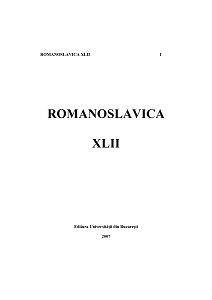Impresionismul în literatură
Impressionism in literature
Author(s): Adriana CristianSubject(s): Visual Arts, Comparative Study of Literature, French Literature, Russian Literature, 19th Century, Sociology of Art, Sociology of Literature
Published by: Editura Universităţii din Bucureşti
Keywords: Impressionism; literature; Aesthetics;
Summary/Abstract: Having as a starting point the existence of similar tendencies in the evolution of arts, I will try to demonstrate that the impressionistic methods were used not only in painting, but also in literature, in Turgenev’s and Flaubert’s novels. The above-mentioned novelists used the fragmental event descriptions, and the result was a sequence of unlinked scenes, of instant sketches, corresponding to preliminary drawings in fine arts. In Turgenev’s and Flaubert’s works, in scenery descriptions, the shadow is not always black, but it is often coloured (blue, grey, green etc.), as Delacroix painted it. Turgenev and Flaubert did not render precise outlines of the described objects as in the paintings of the impressionists. They used the imperfect tense in order to extend the duration of the events. The basic aesthetic principle of the impressionistic art is called discontinuity and Turgenev’s and Flaubert’s methods are in accordance with it.
Journal: Romanoslavica
- Issue Year: XLII/2007
- Issue No: 1
- Page Range: 18-34
- Page Count: 17
- Language: Romanian

